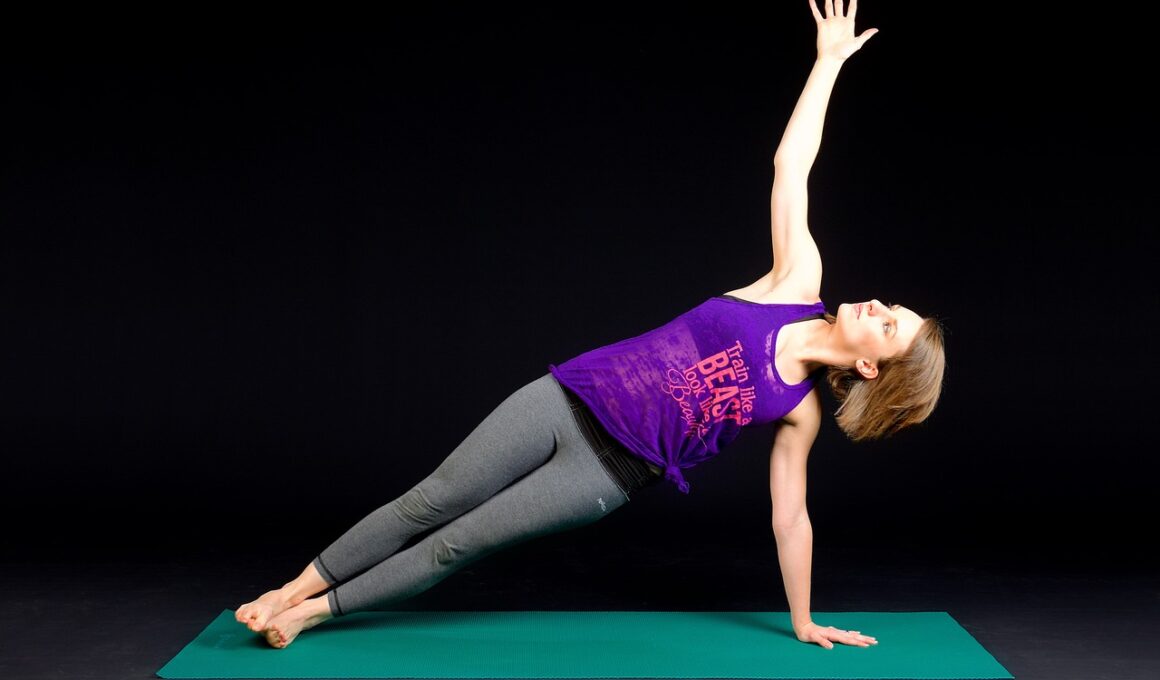The Role of Core Stability in Functional Sports Training
Core stability is a crucial aspect of functional sports training, as it enhances overall athletic performance. Engaging the core muscles improves balance, coordination, and strength, providing a solid foundation for athletes. When these muscles are strong and stable, they support efficient movement patterns crucial in nearly every sport and activity. A well-activated core helps athletes maintain proper posture during dynamic movements, reducing the risk of injury. Incorporating exercises that target core stability into training can elevate performance levels. Additionally, a strong core aids in transferring power from the lower body to the upper body, which is vital in sports requiring explosiveness, such as sprinting or throwing. Exercises like planks, bridges, and rotational movements effectively strengthen the core. Furthermore, maintaining core stability is key in stabilizing the spine during high-intensity activities. In essence, enhancing core stability not only boosts athletic performance but also promotes better body mechanics, thereby minimizing the likelihood of injuries. Thus, athletes must prioritize core training as part of their regular functional training regimen for optimal results.
One effective strategy for improving core stability is incorporating functional training principles into workout routines. Functional training focuses on developing strength through complex movements that mimic real-life situations and sports performance. By engaging multiple muscle groups in unison, athletes can build the necessary core stability to perform under pressure during competitions. Using equipment like stability balls, resistance bands, and balance boards can further enhance these training sessions. Incorporating drills that emphasize stability while performing dynamic movements will yield positive results over time. For example, performing squats or lunges on unstable surfaces challenges the core more than on solid ground. Moreover, integrating agility and plyometric exercises helps athletes develop the explosive capabilities needed for their respective sports. Understanding the importance of core stability and integrating focused training approaches can significantly enhance athletic performance. Ultimately, functional training geared towards core stability can translate to improved results on the field, court, or track. A structured plan that progressively challenges the core can greatly benefit any athlete looking to maximize their abilities and reduce injury risk while performing.
Benefits of Core Stability Training
The benefits of core stability training extend beyond athletic performance, positively impacting everyday activities. Improved core strength translates to better functional movement patterns, making daily tasks easier and more efficient. For instance, carrying heavy groceries, lifting objects, or maintaining good posture during long hours of desk work becomes significantly easier with a strong core. Enhancing core stability can also lead to increased endurance levels because the core supports primary muscle groups during prolonged exertion. When athletes engage their core effectively, they experience less fatigue and improved stamina throughout their performance. Furthermore, well-developed core stability aids in injury prevention by promoting proper alignment during movement. This alignment is crucial, as misalignment can lead to overuse injuries and chronic pain. Education is essential for athletes to understand which exercises effectively target core stability. Overall, incorporating core stability training enhances performance and enriches everyday life. By integrating core-focused workouts into regular training routines, individuals can benefit from a more robust and resilient body that performs optimally in all areas, including recreational activities.
Integrating core stability exercises into a training regime requires understanding the various techniques available. Different exercises target specific muscle groups within the core area and should be incorporated into training plans. Strengthening the transverse abdominis, obliques, and rectus abdominis will lead to overall core stability. For example, exercises such as dead bugs, anti-rotation hold, and bird-dogs can effectively engage these muscle groups. Furthermore, focusing on functional movements, including kettlebell swings and medicine ball throws, can enhance core stability when performed with proper technique. To build core strength progressively, it is essential to modify exercises to ensure that they are challenging yet achievable. Practicing proper form while executing foundational exercises can significantly aid in core development. Additionally, conducting functional assessments can help identify weak areas in the core and guide a targeted training approach. For athletes, working with a knowledgeable trainer can provide valuable insights into effective training methods that emphasize core stability. Lastly, promoting recovery and mobility techniques, such as yoga or stretching, can further enhance stability and maintain the flexibility essential for optimal performance.
Core Stability in Various Sports
Core stability is a vital component across numerous sports, demonstrating its versatility and relevance. In sports like soccer and basketball, a strong core supports balance during quick changes in direction and jumping. Athletes must stabilize their core to execute techniques effectively while minimizing the risk of injury. In disciplines such as gymnastics or martial arts, core strength contributes to maintaining body control in dynamic routines or grappling scenarios. Endurance sports like running also benefit from core stability, as strong core muscles aid in maintaining proper form over long distances. Additionally, sports involving weights or strength training require efficient core engagement to support heavier lifts safely. Integrating sport-specific core stability exercises into training regimes is essential for athletes at all levels. Practicing exercises tailored to the movements performed in a given sport increases transferability to real-game situations. Consequently, understanding the relationship between core stability and sport performance can help athletes gauge their training effectiveness. Emphasizing sport-specific drills and exercises focused on core stability can lead to improved performance on the field, mat, or court.
The integration of technology in assessing core stability is paving the way for more tailored functional training programs. Advanced training tools like motion capture systems, pressure sensors, and wearable devices allow athletes to gain insights into their core stability. These technologies enable trainers to evaluate performance metrics related to core activation and stability during various activities. By analyzing collected data, athletes can identify their weaknesses and areas for improvement in real-time. Furthermore, virtual coaching applications increasingly provide personalized core stability exercises based on an athlete’s unique data. This level of customization allows for more effective training strategies to enhance core strength and stability. Additionally, such technological advancements create opportunities for engaging workouts that maintain motivation and accountability. Moreover, incorporating biofeedback mechanisms can encourage athletes to develop better awareness of their body’s positioning and movement mechanics. As science and technology collaborate with sports training, developing methods to monitor core stability and performance enhancements are constantly evolving. Staying updated on these advancements can benefit athletes and trainers looking for the most effective paths to success.
Conclusion and Implementation
In conclusion, core stability plays an integral role in functional sports training and overall athletic performance. Athletes must prioritize core training to enhance their abilities and minimize the risk of injury. Effective implementation of various core stability exercises tailored to individual sports can lead to significant results. Developing a suitable training plan that includes dynamic workouts, sport-specific drills, and technological assessments can further enhance core engagement. Moreover, educating athletes on the importance of core stability creates awareness that promotes dedicated training efforts. By fostering a culture of core stability focus, athletes can increase their overall effectiveness in their sport and daily activities. Sustaining a robust core allows for improved power transfer and injury prevention. Ultimately, integrating core stability training into regular athletic routines yields substantial long-term benefits. As athletes invest time and effort into enhancing their core stability, they can unlock their full potential within their sports. The journey to better core stability is a continuous process that requires consistent effort, learning, and adaptability to different training methods.


